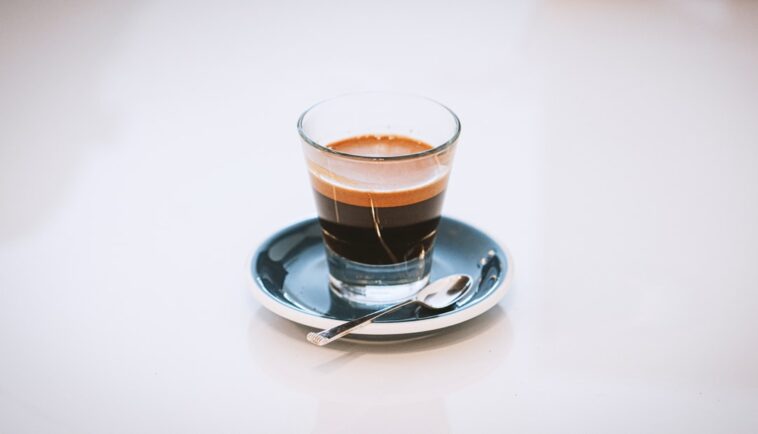So, you want to learn how to make espresso like a pro? You’ve come to the right place! Espresso is the base for so many delicious coffee drinks – lattes, cappuccinos, Americanos – and mastering it at home can seriously up your coffee game. Don’t be intimidated; while it might seem fancy, making espresso is totally achievable with the right equipment and a little know-how. I’m here to guide you through the process, step-by-step, so you can pull rich, flavorful shots of espresso in your own kitchen.
What You’ll Need to Make Espresso
Before we dive into the how-to, let’s gather our tools. Here’s a breakdown of the essential equipment:
- Espresso Machine: This is the heart of the operation. There are many types, from manual lever machines to semi-automatic and fully automatic ones. For beginners, a semi-automatic machine is a great starting point.
- Coffee Grinder: A burr grinder is crucial for achieving the right consistency. Blade grinders create uneven grounds, which won’t work well for espresso. You want a fine, consistent grind.
- Espresso Beans: Freshly roasted, high-quality beans are key. Look for beans specifically labeled for espresso.
- Tamper: This tool is used to compress the coffee grounds in the portafilter (the handle that holds the coffee).
- Portafilter: As mentioned above, this holds the ground coffee during the extraction process.
- Cups or Mugs: Choose espresso cups or mugs that are appropriately sized for your drinks.
- Scale (Optional but Recommended): A digital scale helps you measure the coffee grounds and the espresso yield accurately, leading to consistent results.
The Espresso-Making Process: A Step-by-Step Guide
Now that we have everything we need, let’s get brewing!
- Grind Your Beans: Grind your coffee beans to a fine, consistent texture. This is probably the most important factor in achieving a good espresso. Start with a setting that seems fine and adjust as needed. It should feel like sand but finer.
- Dose Your Portafilter: Weigh out the correct amount of coffee grounds. A standard double shot of espresso typically uses 18-21 grams of coffee. Use your scale for accuracy!
- Distribute the Grounds: Evenly distribute the grounds in the portafilter. This helps ensure a uniform extraction. Some people use a distribution tool, but tapping the portafilter gently on the counter a few times can also work.
- Tamp the Grounds: Use your tamper to compress the grounds firmly and evenly. Apply about 30 pounds of pressure. A level tamp is crucial for proper water flow.
- Purge the Group Head: Before inserting the portafilter, run the espresso machine briefly without it to clear out any old coffee grounds or water. This helps maintain a consistent temperature.
- Insert the Portafilter: Lock the portafilter securely into the group head.
- Start the Extraction: Immediately start the espresso machine. Aim for an extraction time of 25-30 seconds for a double shot.
- Watch the Extraction: Observe the espresso as it pours. It should start as a dark, syrupy stream, gradually turning lighter and blonding towards the end.
- Stop the Extraction: Stop the machine when you’ve reached your desired yield. A general guideline is a 1:2 ratio – for example, 18 grams of coffee in, 36 grams of espresso out.
- Enjoy! Your espresso is ready to be enjoyed as is, or used as the base for your favorite coffee drink.
Tips for Perfecting Your Espresso
Making great espresso takes practice. Here are some tips to help you improve:
Dialing In: “Dialing in” refers to the process of adjusting your grind size, dose, and extraction time to achieve the perfect balance of flavor. Don’t be afraid to experiment! Keep track of your adjustments and the resulting taste.
Freshness Matters: Always use freshly roasted coffee beans and grind them just before brewing. Coffee loses its flavor quickly once it’s ground.
Water Quality: Use filtered water for the best-tasting espresso. Hard water can affect the flavor and damage your machine.
Machine Maintenance: Regularly clean your espresso machine and grinder to keep them in top condition. Follow the manufacturer’s instructions for cleaning and descaling.
Preheating: Preheating your espresso machine, portafilter, and cups helps maintain a stable temperature during extraction. This contributes to a more consistent and flavorful shot.
Troubleshooting Common Espresso Problems
Sometimes, things don’t go according to plan. Here are some common espresso problems and how to fix them:
Sour Espresso: This often indicates underextraction. Try grinding finer, increasing the dose, or extending the extraction time.
Bitter Espresso: This usually means overextraction. Try grinding coarser, decreasing the dose, or shortening the extraction time.
Weak Espresso: This could be due to insufficient coffee grounds or a coarse grind. Make sure you’re using enough coffee and that your grind size is appropriate.
No Espresso: Check that the portafilter is securely locked in place and that there are no blockages in the machine.
Espresso Machine Types: A Quick Overview
Choosing the right espresso machine can be overwhelming. Here’s a brief overview of the different types:
Manual Espresso Machines: These machines require you to manually control the pressure and extraction time. They offer the most control but also require the most skill.
Semi-Automatic Espresso Machines: These machines automatically control the pressure but require you to start and stop the extraction. They’re a good balance of control and convenience.
Automatic Espresso Machines: These machines automatically control the pressure and extraction time. They’re very convenient but offer less control.
Super-Automatic Espresso Machines: These machines grind the beans, tamp the grounds, and extract the espresso with the touch of a button. They’re the most convenient option but also the most expensive.
Beyond the Shot: Espresso-Based Drinks
Once you’ve mastered making espresso, you can create a wide range of delicious coffee drinks:
Latte: Espresso with steamed milk and a thin layer of foam.
Cappuccino: Espresso with steamed milk and a thick layer of foam.
Americano: Espresso diluted with hot water.
Macchiato: Espresso marked with a dollop of foamed milk.
Mocha: Espresso with chocolate syrup, steamed milk, and whipped cream.
Frequently Asked Questions
What’s the best grind size for espresso?
The best grind size for espresso is very fine, finer than you would use for drip coffee or French press. It should feel like fine sand. The ideal grind size will vary depending on your espresso machine and the coffee beans you’re using, so you’ll need to experiment to find the perfect setting.
How much coffee should I use for a double shot of espresso?
A standard double shot of espresso typically uses 18-21 grams of coffee.
What’s the ideal extraction time for espresso?
The ideal extraction time for a double shot of espresso is 25-30 seconds.
How do I clean my espresso machine?
Follow the manufacturer’s instructions for cleaning and descaling your espresso machine. Regularly clean the portafilter, group head, and steam wand to prevent buildup and ensure optimal performance.
What kind of coffee beans are best for espresso?
Look for beans specifically labeled for espresso. These beans are typically roasted to a darker level, which brings out their rich, bold flavors. Freshly roasted beans are always best.
Making espresso at home is a rewarding journey. Don’t get discouraged if your first few attempts aren’t perfect. Keep practicing, experimenting, and learning, and you’ll be pulling delicious shots of espresso in no time. Enjoy the process, and happy brewing!


GIPHY App Key not set. Please check settings